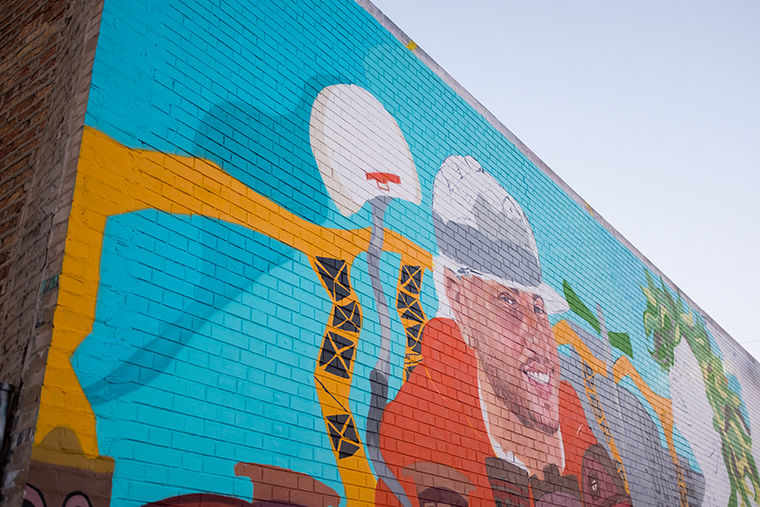Logan Square mural remembers neighborhood before gentrification
A work-in progress mural in Logan Square by artist Sam Kirk.
October 30, 2017
Justine Bayod-Espoz, spokeswoman for community organization Somos Logan Square, remembers a Logan Square from her childhood that was filled with families. It was a safe, comfortable and predominantly Latino neighborhood where she could come home from school and find kids playing in the streets while blasting music from her bedroom window for her friends to enjoy below.
Children could stay outside until midnight during the summer, she said.
Now, Bayod-Espoz said, she rarely sees working class families or hears music. Instead, she sees 20- and 30-something singles going to and from bars and walking their dogs.
The neighborhood’s lost atmosphere that Bayod-Espoz remembers as a child in the ‘80s is depicted in a mural on the corner of Kedzie and Milwaukee avenues—on a bus station wall outside the Logan Square Blue Line stop. This mural is being painted by multidisciplinary artist Sam Kirk and muralist Sandra Antongiorgi.
“This is an opportunity to take a look at what was developed in Logan Square by people in the community,” Kirk said. She added that it was a chance to use places and memories—which were noted by youth groups and community leaders with whom she and Antongiorgi met during the development process—as visuals for the project.
Antongiorgi and Kirk explained that those visuals depict the musicality that has disappeared from the neighborhood’s streets, as well as children playing near fire hydrants, and acknowledging Logan Square’s intergenerational diversity.
“We celebrate our elders and we celebrate our youth,” Antongiorgi said. “You’ll see a woman that represents the elders in the community, and then you’ll also see young people, maybe a guy who’s in his early 20s.”
Ald. Carlos Ramirez-Rosa (35th Ward) spearheaded the mural’s development, and his office was specific about how it wanted ideas for the mural to be incubated, Kirk said.
“The alderman was particular about making sure the community’s voice was involved in the concept development for this piece,” she said. “That was a perfect fit for [Antongiorgi and I, because we] are big on making sure the community’s voice and what the people think and feel are part of the mural.”
Fighting gentrification in the neighborhood is about more than reflecting on the past, Bayod-Espoz said. Though she thinks it might be difficult for this to be illustrated in a mural, she wishes for projects like Antongiorgi and Kirk’s to show the authentic struggle gentrification creates and to make passersby uncomfortable with its reality.
“I would like to see some kind of depiction of people who have gone through trials and hardships because they’re losing their homes and community,” Bayod-Espoz said. “But I would also like to see hope. If I could depict it any which way I could, I would depict it as a cycle. I would depict it as what we’re losing, but also coming back and gaining more.”








